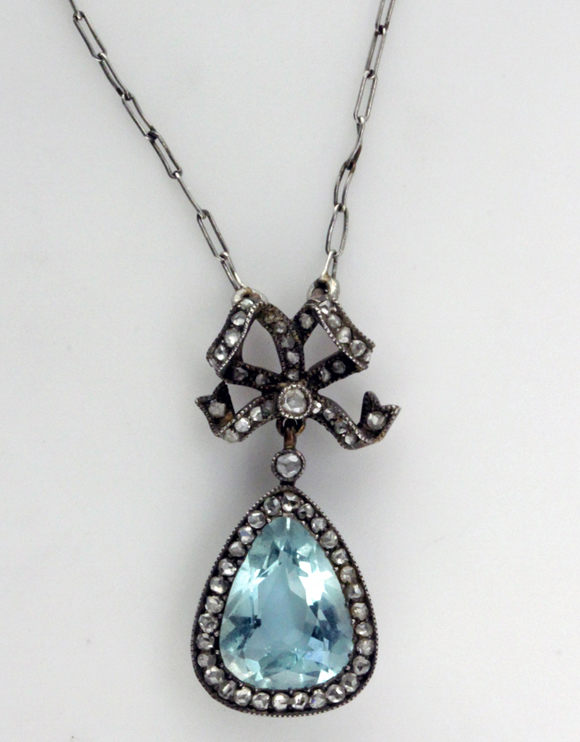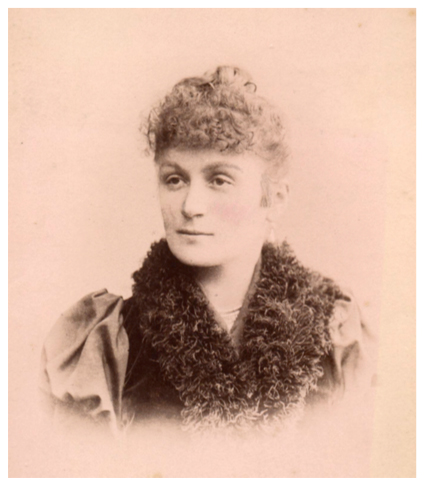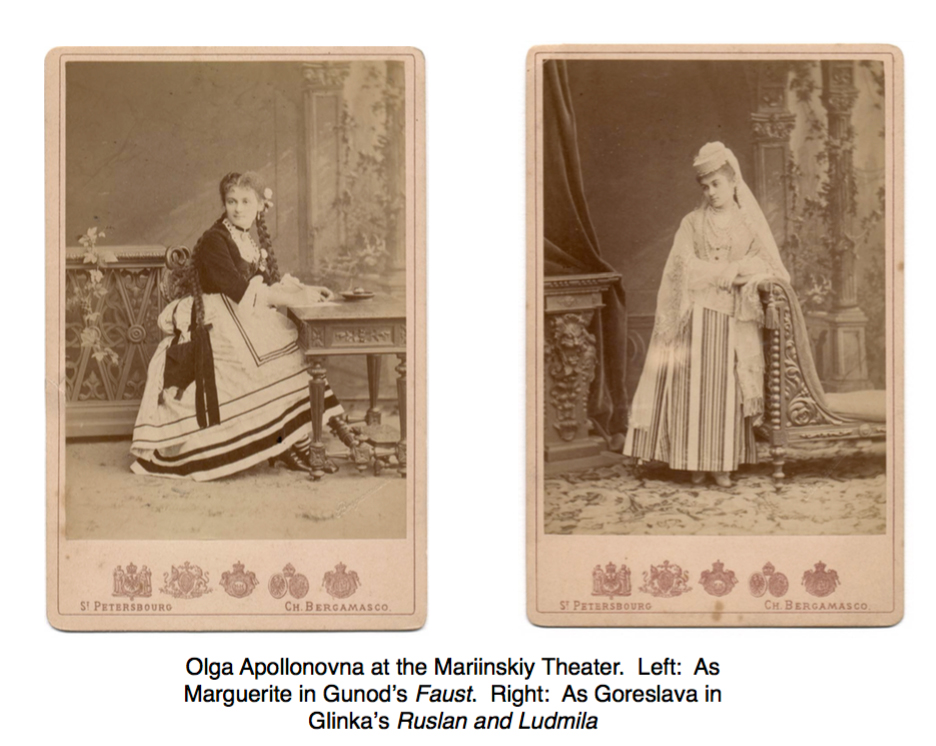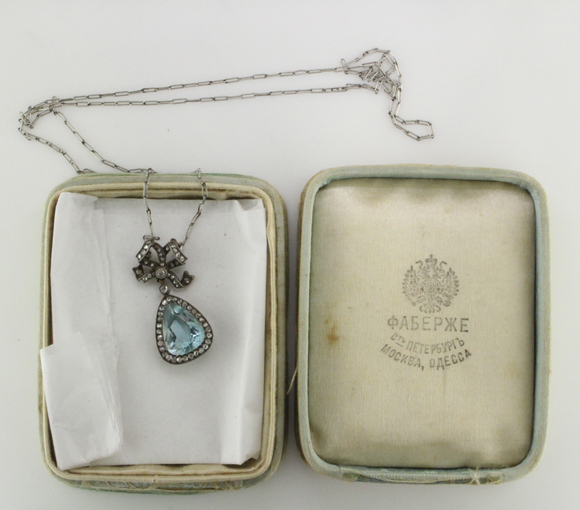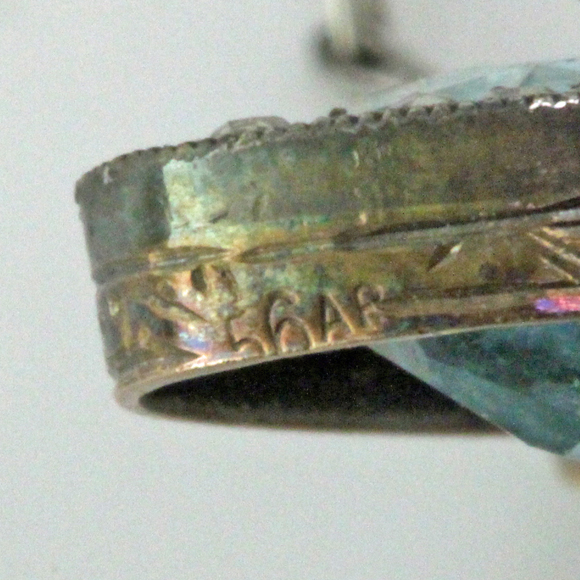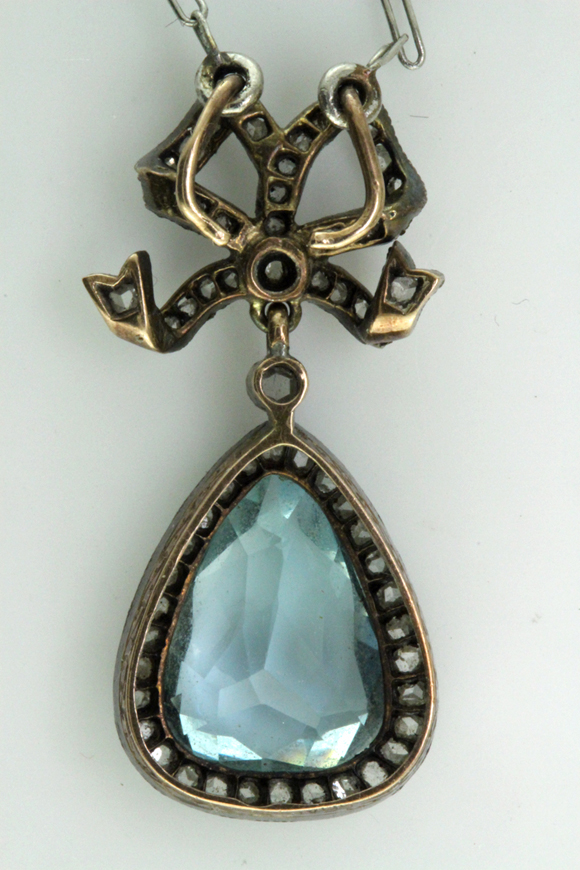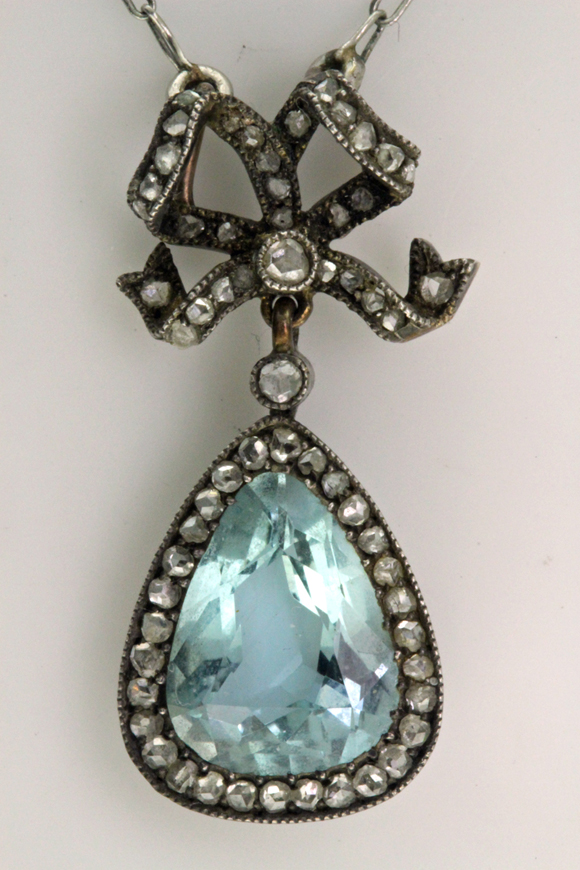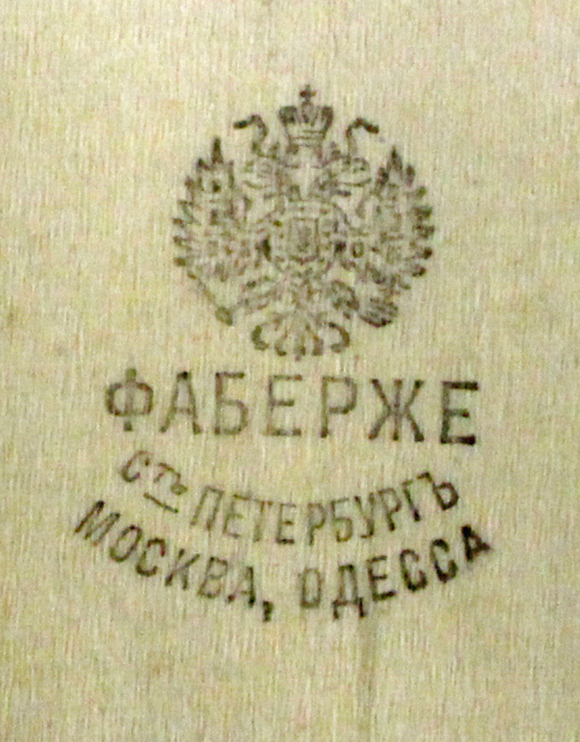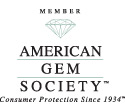Faberge Necklace
January 28th, 2017 by James L. Sweaney, CGA, FGA. GGWe recently had the opportunity and pleasure to examine this sweet Faberge necklace from the early 20th century. The necklace is fabricated from 14 karat yellow gold and silver, set with rose cut Diamonds and a beautiful pear shaped Aquamarine. The delicate chain is handmade from platinum.
Our client has a wonderful family provenance for the piece.* The original owner of the necklace was named Olga Apollonovna Skalkovskaya. Olga was born into the Russian gentry, the eighth of twelve children. She was beautiful, talented and well educated, finishing her education by graduating with honors from the St. Petersburg Conservatory as singer.
She had such a wonderful mezzo-soprano voice and theatrical presence that she was immediately offered the position of leading soprano of the Imperial St. Petersburg Opera performing at the Mariinskiy Theater. Olga, a rising star, soon attracted the attention of Czar Alexander II, who made a habit of visiting her in her dressing room. Clearly a delicate situation– how does one say “no” to an emperor. At the same time, she was being courted by a well known physician, Lev Bertensson. To solve her problem, she married the doctor, didn’t renew her singing contract and left the Opera.
Even though her operatic career was over, Olga continued to sing and to teach while she raised three sons and a daughter. Her son, Sergei said “She turned our house into a kind of salon, a meeting place for the most outstanding Russian and foreign musical talents.” In 1879, a contemporary critic listed her among “the general officers of our musical world,” along with Cui, Borodin, Mussorgsky and others. Sergei recalled “Visitors to our house — not only as my father?s patients, but as welcome guests and friends — included some of the most outstanding Russian as well as foreign writers, musicians, actors and artists. Suffice it to name them: Dostoevsky, Turgenev, Grigorovich, Tchaikovsky, Mussorgsky, Rimsky-Korsakov, Borodin, Anton and Nikolay Rubinstein, Auer, Yesipova, Davydova, Savina, Stanislavski, Figner, Chaliapin, Battistini, Duze, Repin and Rerich.” (Sergei Bertensson, Around Art, Hollywood, 1957). Famous names indeed!
Olga and Lev lived in the swirl of Russian high society until 1905, when tragedy struck during the Russo-Japanese war. Her son Boris, a doctor in the Russian navy, was killed when his ship was sunk by Japanese warships. Olga abandoned her singing career. Her marriage to Dr. Bertensson deteriorated until they separated around 1916. Hard times were imposed by the Russian Revolution. Olga stayed with son Mikhail until his death in 1933, when she emigrated to Estonia to live with daughter Tatiana. She died in 1941 at the age of 90 after a long life full of ups and downs.*
*excerpted from family historical document authored by Dimitri Arensburger.
We know her necklace was made in St. Petersburg around the time of the Russo-Japanese War. The marks date it to sometime between 1904 -1908 because the pendant is marked 56, the old Russian quality mark for 14K, and is accompanied by the initials AP (cyrillic), the initials of St. Petersburg assayer Alexander Romanov for that period. The box is correct, the markings appear authentic, and the apparent age and wear looks right, so we can assume with confidence that it’s a genuine piece from the workshops of Faberge.
The style of this necklace is distinctly Edwardian – the delicate bow knot was a favorite element of the jewelry designers of the time. Beginning around 1890, the large ostentatious jewelry of the Victorian era began to be replaced by ethereal delicate styles. Jewelers who chose not to embrace Art Nouveau or the Arts and Crafts movement developed the style became known as style guirlande (the garland style). These aristocratically styled pieces with their garlands and ribbons, laurel wreaths, bow knots, tassels and lace, recalled the elegant Court of Versailles of the eighteenth century. These designs, favored by the rich and famous, especially by King Edward VII and his court, became know as the “Belle Epoque” style.
Interestingly, the delicate platinum chain has no clasp. Instead, the bow knot top has little hooks on the back. The chain has a ring on each end that is slipped onto the hooks– not the easiest piece to put on but very secure when it’s being worn
The method of using silver overlay on 14K gold was very much in vogue during the late Victorian period. Diamonds became more popular as they became more affordable due to the increased supplies from the mines in South Africa. At the time, silver was the metal of choice for setting diamonds — platinum was not widely available and white gold alloys were not developed until the early 1920s. But silver was not the ideal solution — it presents maintenance issues. As you can see from the photos, the silver overlay of this piece has become very dark with oxidation over time.
Around the turn of the century, silver over gold was largely supplanted as platinum became more available. In 1903, the invention of the oxyacetylene torch, which could reach the temperatures necessary to melt platinum, meant that jewelers could make pieces entirely from platinum. Jewelers of the day quickly learned to appreciate the wonderful working qualities of platinum. Cartier became famous for his delicate designs that exploited not only the white beauty of platinum but also its strength and workability. Hand engraving is particularly suited to platinum– it’s beautiful and preserves the luster of platinum better than high polished surfaces– so many Edwardian pieces are lavishly embellished with beautiful engraved decorations.
Our client has shown the piece to a firm in New York that specializes in vintage Russian jewelry and to an expert at the Antiques Road Show. Their expert valuations were significantly different, demonstrating the difficulty in appraising an item like this. While her piece has no actual Faberge mark, the style and craftsmanship, the Faberge box and the family provenance prove the piece to be authentic. In the auction markets, pieces from famous makers like Faberge, Cartier, Tiffany, etc., often bring prices far beyond the intrinsic value of materials, particularly when they have such an interesting provenance. This necklace might only have a thousand dollars of intrinsic value, but because of it’s rarity and uniqueness, it appraises for five figures! At auction, this piece would probably sell quickly, attracting the attention of wealthy Russian buyers because of it’s connection to such a famous Russian personality.
Mardon offers auction advice, placements and sales for important jewelry. Auction houses charge private individuals a selling commission plus publication, insurance, and shipping fees. At Mardon, we’ll take care of placing, shipping, and insuring your jewelry for the same cost as the auction house charges. You won’t have to worry about shipping, insuring or getting paid by the auctioneer. We can do this because of our standing in the jewelry trade and our continuing relationship with auction houses like Sotheby’s and Christie’s– they charge us a lower trade rate selling commission. Our excellent insurance covers shipping and handling.
Mardon offers full appraisal services including estate valuations as well as insurance appraisals. We repair, buy and sell vintage and estate jewelry as part of our commitment to our community as “The Family Jeweler.”
Our new shop at the Canyon Crest Towne Centre is open 5 days a week, Tuesday thru Saturday, 10 to 5:30.
Tags: Aquamarine, Auction House, auctioneer, Christie's, estate appraisal, Faberge, hand engraving, Mardon, Mariinskiy Opera, platinum, Rose cut, Russo-Japanese War, silver on gold, Sothebys, St. Petersburg
